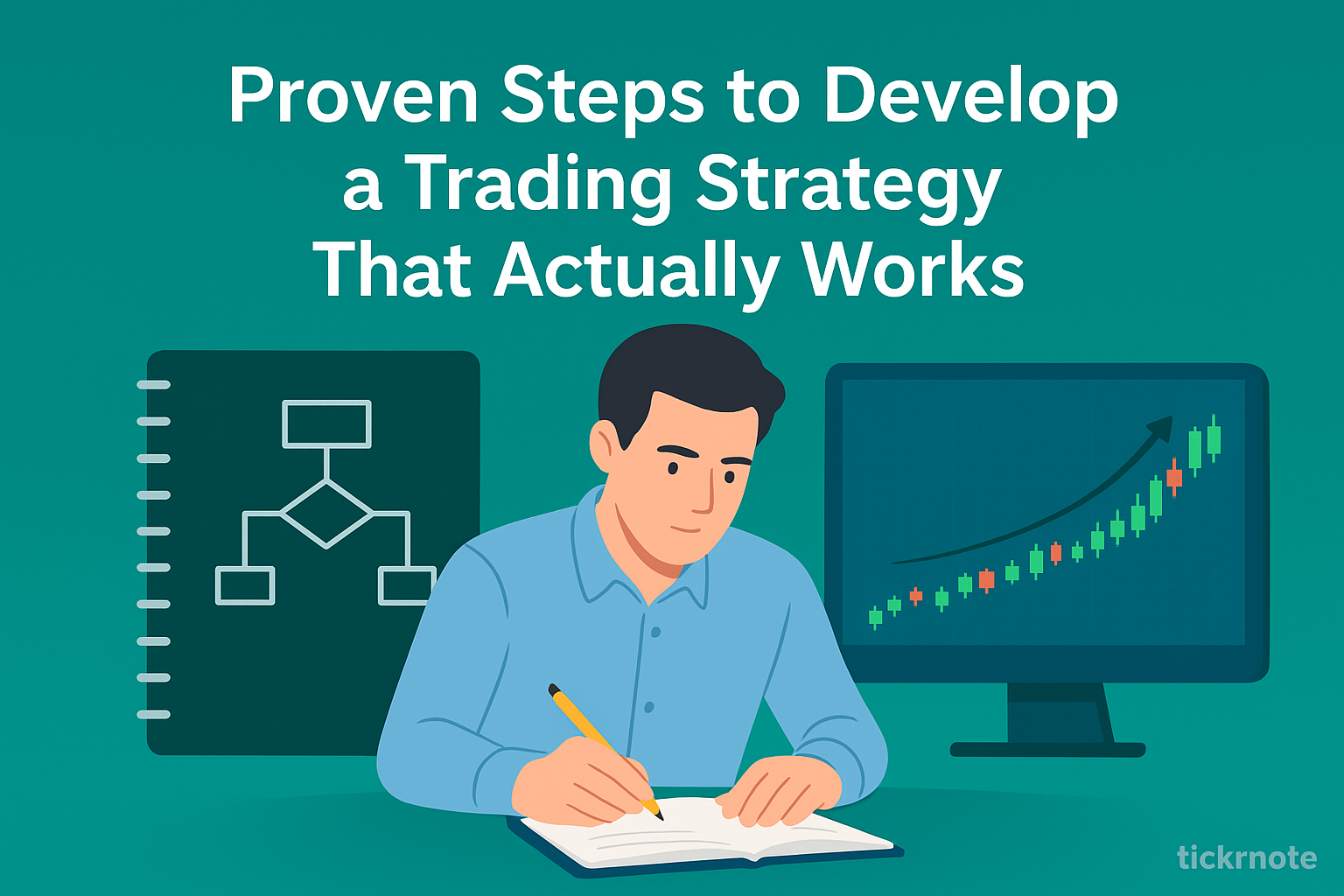Every successful trader knows one truth: random trades don’t build wealth—strategies do.
If you want to transition from beginner to pro, you need a trading strategy that is tested, repeatable, and refined over time. The good news? Building one isn’t as complicated as it seems if you follow the right process.
Step 1: Define Your Trading Style
Before you create a strategy, identify the style that fits your personality and schedule:
- Day Trading – Short-term trades within the same day.
- Swing Trading – Holding positions for several days or weeks.
- Position Trading – Longer-term trades based on fundamentals and macro trends.
👉 Choosing the wrong style is like wearing shoes that don’t fit—you’ll struggle to stay consistent.
Step 2: Pick Your Market and Tools
Decide what you’ll trade (stocks, ETFs, forex, crypto) and what tools you’ll use:
- Technical Indicators – Moving averages, RSI, MACD for timing entries/exits.
- Fundamental Factors – Earnings, revenue growth, debt ratios for stock selection.
- Risk Management Rules – Maximum risk per trade (usually 1–2%).
Step 3: Write Down Clear Rules
A strategy isn’t “buy when it feels right.” It’s rules-based. Write down:
- Entry criteria (chart pattern, breakout level, or earnings report).
- Stop loss placement (where your trade idea is invalidated).
- Take profit targets (using a risk-to-reward ratio).
💡 A strategy without rules is just guesswork.
Step 4: Backtest Your Strategy
Before risking money, test your rules on historical data. Backtesting shows whether your idea might work in real markets. While no backtest is perfect, it can help eliminate weak setups before you trade them live.
Step 5: Start Small and Log Every Trade
This is where most beginners fail they trade randomly and never track results. Logging your trades gives you data to refine your strategy.
✅ Use a trading journal template to track entries, exits, and emotions.
✅ Review weekly to spot patterns in your wins and losses.
Your trading journal becomes your playbook for improvement.
Step 6: Refine and Adjust
Markets evolve. What works in one environment may not in another. Regularly review your results, make small adjustments, and continue testing. Pros aren’t rigid they adapt while sticking to proven principles.
Step 7: Stick to the Process
A great strategy is useless without discipline. The key is following your rules consistently, not jumping ship when emotions take over.
✅ Free Resource for You
To help you get started, we’ve created a Trading Strategy Checklist you can use to design and track your first strategy.
👉 Download the Trading Strategy Checklist (PDF)
Final Thoughts
Creating a trading strategy isn’t about copying someone else’s setup. It’s about building a rules-based system you trust, testing it, and refining it with discipline. The difference between beginners and pros isn’t luck—it’s consistency.
👉 Ready to start building your edge? Use our trading journal templates to log, analyze, and improve your strategy one trade at a time.


Leave a Reply